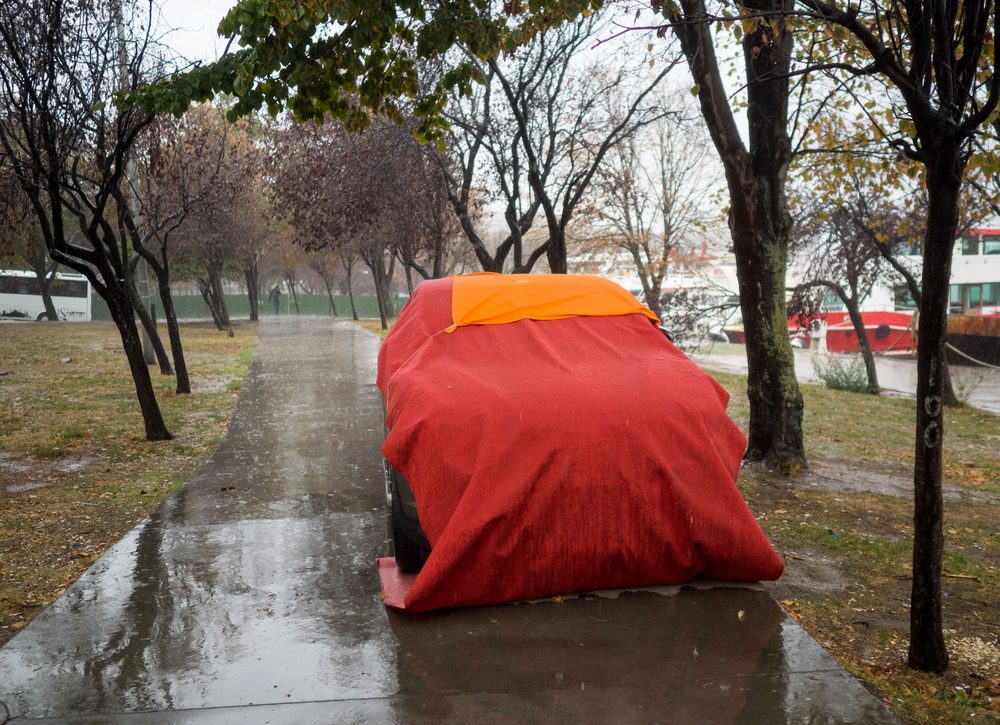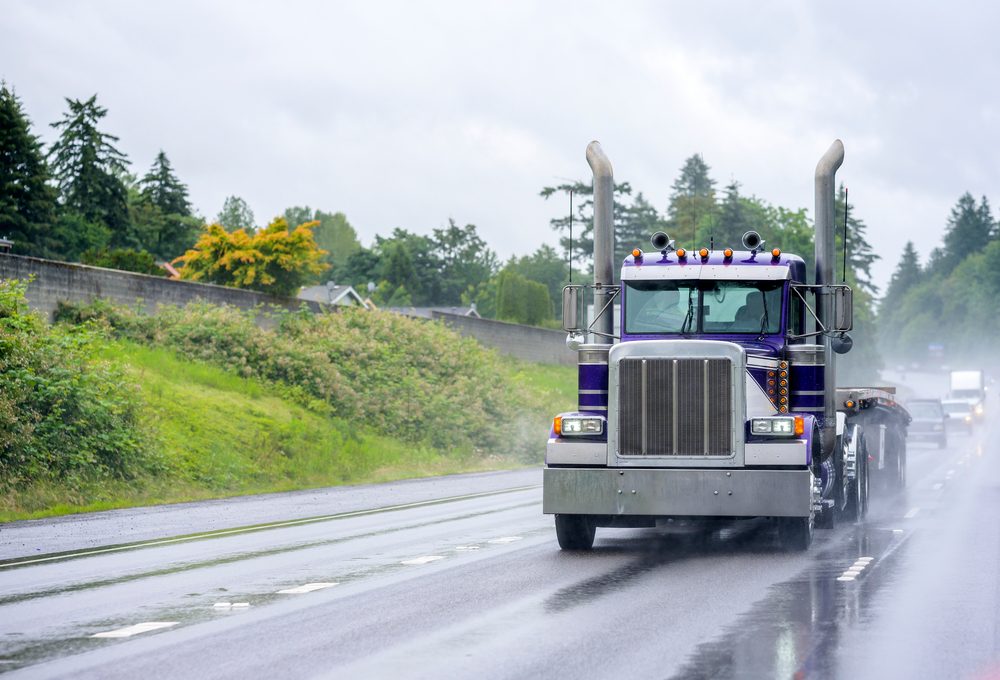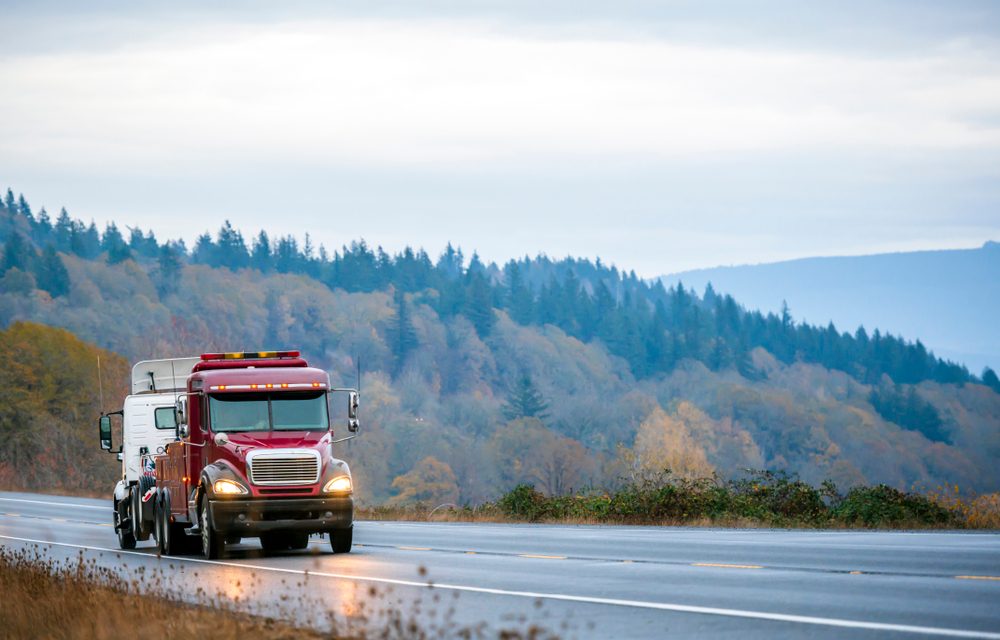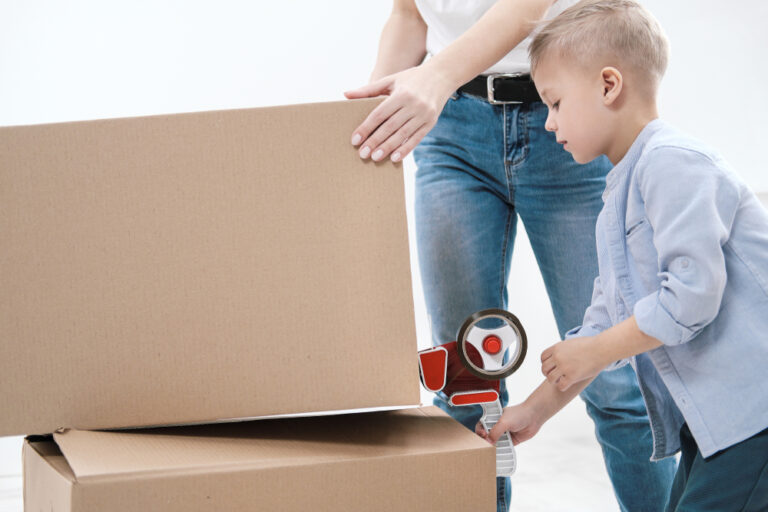Moving in the Rain – How to Do It While Keeping Your Stuff Safe
Moving house in the rain can be quite a hassle. The traffic can get congested, and your items are more likely to get water damaged. That’s why most people prefer to move during the dry season.
However, you may not have a choice. If you need to move in bad weather, the good news is that there’s a lot you can do to make the process smoother. Keep reading to discover some useful tips on moving house in poor weather conditions.

1. Wear Sturdy Shoes (And Have a Second Pair)
As you prepare for the move, you’ll probably want to go with some old, worn-out shoes. After all, you don’t want to ruin your favorite pair.
The problem is that old footwear might do more harm than good. The truck ramp will be a literal slippery slope, so you’re more likely to fall and hurt yourself if the soles of your shoes are worn. It might be worth sacrificing a good pair of shoes with great traction to avoid this.
And you’ll no doubt need to walk inside and outside a lot. So, it’s best to have another pair of shoes near the entrance so you can quickly change to a dry pair while going in and out of the house. Moving is stressful enough without having to clean up muddy floors, so this extra step can save you some time and energy.
2. Lay Down Some Cardboard
Despite your best efforts, there’s a high chance some rainwater will get in the house while everyone’s running around. The best way to minimize the mess and the chance of someone slipping is to tape cardboard to the floors.
You might see suggestions to use tarps or plastic. This may not be a good idea, as both tend to move around a lot while being walked on. Plus, plastic is quite slippery when wet, so it’s not the best option.
If you have some boxes you don’t need, you can break them apart and put cardboard on the floor. It’ll absorb the water and keep your floors clean.
It’s a good idea to do the same for the inside of the moving van. That way, you’ll ensure that the main touch points and surfaces stay dry.
3. Split Into Groups
Your friends and family can make moving in the rain far more convenient. You can split into two groups – inside and outside. That way, you can create an assembly line that will simplify the loading process and minimize the mess coming into your house.
Of course, one group will have to take one for the team and stay outside. That’s why you should ensure that everyone has proper rain gear. At least a few people in the group should have rain slickers or umbrellas, so bring as many as you can to give the outside group everything they need.
4. Wrap Your Items in Plastic
Cardboard boxes won’t do a great job shielding your items from the rain. Luckily, there’s a quick and easy solution – plastic wraps.
If you hired a moving company, they’ll probably have some shrink-wrap you can use to keep your items safe. However, not every mover has this, or they might charge you extra for it. In these cases, you can use large bags for moving house without exposing your things to the rain.
Don’t hesitate to throw your clothes in a bag. The preferred method is simply rolling the rack onto the truck, but that’s not an option in rainy conditions. Using plastic to cover the rack might not be a complete solution either, as the water can still get in from underneath. So, while you might end up with wrinkled clothes using a bag, it’s still better than having to wash them as soon as you move in.
Of course, you should pay special attention to valuable items like antiques or paintings. Make sure there are several layers of shrink wrap around them, covering every inch. Water can find its way through even the smallest gaps, so don’t leave any room for your items to get damaged.
While you can reinforce and protect cardboard boxes, the safest thing would be to replace them altogether. You can find plastic moving boxes that will protect your items much more effectively.

5. Disassemble Your Furniture
Moving furniture in the rain is a daunting task. This is easily the most challenging part of loading your items on a truck. Due to its porousness, wood absorbs water very quickly, as do cushions and most fabrics.
This is why you’ll need to put extra effort into packing your furniture. Disassemble as much of it as possible to wrap the parts in plastic more easily and also have less weight to carry around. If you can’t take a piece of furniture apart, at least ensure it’s properly wrapped and taped down.
Investing in water-resistant gloves is also an excellent idea, as you’ll need a tight grip on your furniture while carrying it. Don’t rush to load furniture, as this can increase the chances of slipping. Focus on protecting the furniture before you take it out of the house, and you won’t have to hurry to keep it from getting too wet.
6. Load Resistant Items First
Regardless of what the forecast says, rain is unpredictable. It can slow down or stop just as quickly as it starts.
To minimize the chance of the most sensitive and valuable items getting exposed to the rain, you should save them for last. Start with plastic boxes, bags, and items that are either more resistant to water or tightly wrapped.
Naturally, you’ll want to save electronics and appliances for the very end. Doing so will not only give the rain time to stop but also let you ensure that the items are properly protected.
7. Take Full Advantage of Space
Moving house in the rain doesn’t have to be so bad if you shorten the distance between your house and the moving van. There are different ways to do this.
Firstly, if you have a garage, it’s best to store as many items as you can there. That way, the van can get close enough to shorten the loading distance and ensure minimal exposure to rain. This is extremely helpful both for loading and unloading your items.
If your new home doesn’t have a garage, you can unload everything into a dedicated area close to the front door. You can appoint one person to stay there and move the items that come into the rooms they belong.
In case there’s no way for the van to get close to the house, you can set up a drying station. This can be a tent you’ll put somewhere in the middle. It’s an excellent option for letting some items that have gotten wet dry out and for those helpers who will work in the rain dry off as well.
8. Manage Excess Water
In most cases, a bit of water won’t do much damage to your belongings. However, you shouldn’t let it stay there for too long. If you notice something’s wet, dry it with a towel straight away. It might also be a good idea to unwrap or unpack the item and repack it to ensure it’s no longer exposed to a wet surface.
This is where the tent we just mentioned can come particularly handy. You can instantly prevent water from ruining your items.
9. Work With Professionals
Moving can be exhausting and stressful, and a DIY one can be even more so. Add rain to the mix, and it’ll likely become too much. While you may have thought about handling it on your own, you’ll likely ask yourself, “Do moving companies move in the rain?”
The answer is – they do! Unless they deem the weather too dangerous, most movers will happily take on the job despite the conditions.
Do movers move in the rain last minute? Yes, many of them offer last-minute service if the weather takes you by surprise and you’re on a tight deadline.
So how do moving companies work?
Well, that depends on the provider you choose. Some will only transport your things, while others offer more services like packing, junk removal, and storage. Whatever you need, you should have no trouble finding a mover who will accommodate it.
Of course, make sure you only work with licensed professionals. Check their references and online reviews if possible. There are many providers out there, but not all will offer the quality of service you’re looking for.

Here are some factors to consider when choosing a mover:
- Service Area – Are you moving locally or across the country? Not all movers offer long-distance options, so check their service area before reaching out.
- Rates – Think about whether flat or hourly rates make more sense for your move. Compare several options to find the most competitive one.
- Insurance – Every good mover should have insurance according to local and state laws. The difference in coverage can be pretty significant, though, so look for movers with a solid plan.
A reliable company can make your move a breeze, despite the bad weather. Take your time to find the right option, and you’ll save yourself many headaches.
10. Get to Your New Home Before the Movers
If you decide to hire a moving company, it’s best if you arrive at your new place before they do. Doing so will give you the time to prepare for unloading and unpacking.
When you get there, the first thing you should do is designate a covered area with plenty of sunlight or, if possible, turn on the heat. If there’s water on any items, these conditions will ensure it evaporates faster.
In addition, you should collect lots of old towels, as you may have to dry some items once they arrive. If you have any extra cardboard, put it around the hallway to prevent slipping and minimize the mud coming in.
11. Unpack Straight Away
After spending a whole day moving in the rain, the first thing you’ll want to do after moving is kick off your shoes and unwind. While this may be possible with moving in normal conditions, bad weather will require you to rearrange your priorities.
The first thing you should do when the move is over is to unpack and ensure nothing inside the boxes is wet. You never know when water may have seeped in and damaged your items. Start with the most sensitive items and double-check to make sure they’re dry.
There’s a good chance you won’t have the energy or willpower for this after such a busy day but think about the alternative – you’ll regret discovering that something’s damaged when you could’ve saved it.
12. Don’t Forget About Safety
Moving generally involves some mild safety hazards. Rain can add even more worries, so you should take extra precautions.
First of all, wear light and breathable clothes at all times. Don’t wear baggy pants or hoodies to avoid getting hooked on something. Flip-flops are another huge “no,” even if it’s hot outside. Choose sturdy, preferably water-resistant footwear.
When lifting something, always use your knees instead of your back, which you should keep straight. Use your legs and core muscles to pick up heavy items to avoid injuries. Also, keep any heavy objects you’re carrying centered and at the waist level to maintain balance.
If there are any depressions or hazardous spots on the path to the truck, lay down some plywood or planks to cover them. Doing the same on your lawn would be best if you need to go over it as well.
If you don’t believe you can carry all the items yourself and there’s no friendly help available, reach out to a professional. Spending a bit of money on packing always trumps injuring yourself.

Weather the Storm Without Issues
Ideally, you’ll avoid moving during any harsh weather conditions. If you can postpone a move by a day or two to see if the weather improve, it’s a better option than going through the hassle of moving in the rain.
But if you need to move into your new home as soon as possible, the tips you saw here will help you go through the process much more smoothly. Remember to pack and wrap your items tightly, and save the most sensitive ones for last. Have proper gear, stay safe, and don’t rush the process to avoid mishaps.
If you’d like to go through the moving process without worrying about the protection of your items if it’s raining, don’t hesitate to reach out to us. Tell us about your move, and we’ll come up with a solution that will keep your belongings safe and dry.






